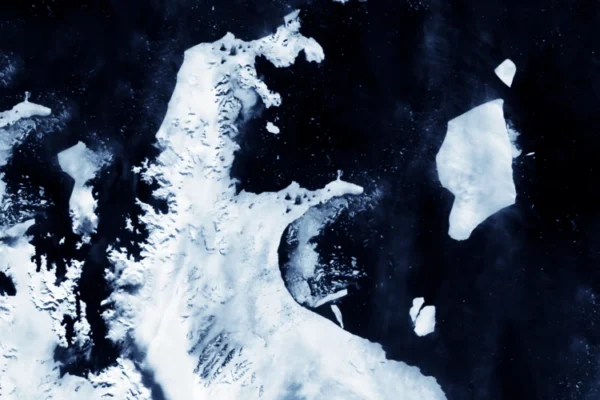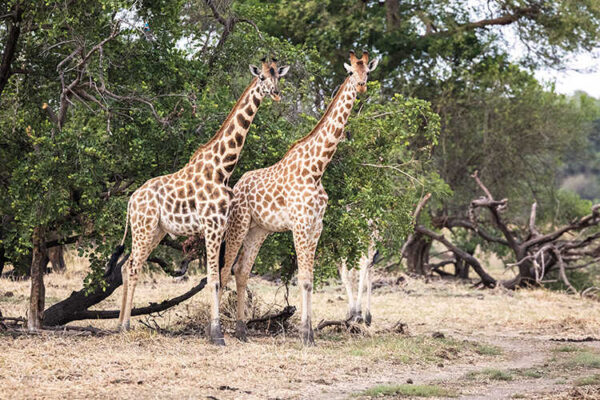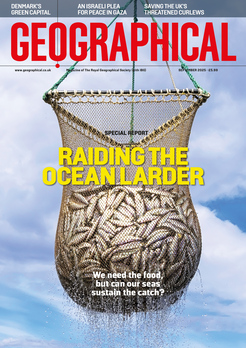
From revitalising New York Harbor with oysters to supercharging climate action using AI, discover our best long reads of 2024
By
2024 has been a year of inspiring and captivating stories at Geographical. Our long reads dive head-first into some of the most pressing topics across the world – from conservation projects to in-depth think pieces of the impacts of over-tourism.
Here we’ve rounded up our favourite long reads of 2024. So, make yourself comfy and dive right into the stories that defined the year…
Can AI supercharge climate action?

From monitoring deforestation via satellites to predicting disasters, AI’s ability to process vast amounts of environmental data is transforming climate action. Yet, this technological revolution has its own costs—intense energy demands and the risk of leaving developing nations behind.
For communities on the frontlines of climate impacts, AI offers hope. Precision agriculture promises to reduce water usage, and advanced modelling can forecast future crises, but how accessible are these solutions to those who need them most? As global temperatures rise, the question arises: will AI accelerate sustainable solutions, or will its limits widen existing inequalities?
Have we had enough of travel?
Global tourism is pushing beloved destinations to the brink. Over-tourism fuels economies but leaves behind overcrowding, housing crises, and the erosion of cultural heritage, sparking protests and calls for change.
For communities under pressure, initiatives like stricter rental regulations, visitor caps, and sustainability campaigns offer potential relief. But as the tourism industry grows, so do questions about the long-term impact on local environments and livelihoods.
The challenge is clear: can travel evolve to support both vibrant economies and thriving communities? Or will unchecked tourism leave these destinations shadows of their former selves?
Giraffes are facing extinction – but one species is bucking the trend

The Kordofan giraffe, a critically endangered subspecies native to Central Africa, has made a significant recovery in Chad’s Zakouma National Park. Once pushed to the brink by poaching, their numbers have rebounded thanks to African Parks, a non-profit organisation.
Through strict anti-poaching initiatives and strong community partnerships, Zakouma has transformed into a safe haven for these giraffes and other wildlife.
Hen harriers: Illegal killings on the moors
In the desolate beauty of England’s uplands, the hen harrier’s acrobatic sky-dance masks a chilling reality: this magnificent bird of prey is being pushed to the brink. Once decimated by hunting in the 19th century, its numbers remain perilously low despite legal protection.
John Birch, a former detective turned wildlife photographer, dives into the murky world of wildlife crime, unravelling a tangled web of denial, evasion, and systemic apathy that enables the killings to persist unchecked.
Revitalising New York Harbor: The Billion Oyster Project

The oysters of New York Harbor are staging an extraordinary revival, rewriting a story that was almost lost to history.
Once heralded as the ‘lungs’ of the harbour, these molluscs played a vital role in filtering water and sustaining marine biodiversity. But over centuries, overfishing, pollution, and urban expansion pushed them to near extinction. Today, thanks to the innovative Billion Oyster Project, they are making a dramatic return.
Climate change is radically affecting our brain health
Rising temperatures, air pollution, and extreme weather aren’t just environmental challenges – they’re directly impacting neurological health.
Extreme heat is more than an uncomfortable inconvenience – it impairs memory, decision-making, and concentration, with prolonged exposure increasing the risk of strokes. Meanwhile, air pollution, particularly fine particulate matter (PM2.5), is fueling neurodegenerative diseases such as Alzheimer’s and dementia.
Climate-driven stressors don’t stop there, though.
The psychological impact of wildfires, hurricanes, and floods is leaving lasting scars, triggering widespread anxiety, depression, and PTSD in affected communities. Vulnerable groups, such as the elderly and those in low-income regions, face the harshest consequences, with limited resources to adapt or recover. As Clayton Page Aldern explores, the intricate connection between the environment and neurological health is a relationship that is fundamental to understand.
Surviving in Ukraine’s Grey Zone

In Ukraine’s Donetsk region, the ‘Grey Zone’ refers to front-line areas where many vulnerable residents, particularly the elderly, remain amid ongoing conflict. Despite evacuation orders, these individuals often lack the means or support to relocate. Daily life is perilous, with frequent shelling targeting civilian infrastructure, including homes, healthcare facilities, and essential services.
Photographer Sean Sutton documents the resilience of these residents, capturing their struggles and determination to maintain a semblance of normalcy despite the devastation surrounding them.
Study reveals conservation’s positive impact on biodiversity worldwide
Global biodiversity has faced relentless decline, but a groundbreaking century-long study offers a glimmer of hope. Analysing 665 conservation projects from 1890 to 2019, researchers uncovered that two-thirds of these initiatives either halted biodiversity loss or spurred recovery – a powerful testament to the impact of human intervention when done right.
From farmland schemes revitalising wading bird populations to eradicating invasive species that once decimated loggerhead turtle nesting sites, the success stories are as diverse as the ecosystems they protect. And here’s the uplifting twist: more recent conservation efforts show an even greater positive impact, signalling that we’re getting better at safeguarding our planet.
The dark side to India’s City of Light: people trafficking in Varanasi

In Varanasi, India’s ‘City of Light,’ a darker reality exists – human trafficking and forced prostitution plague vulnerable communities. Many victims, often young girls from impoverished backgrounds, are lured or abducted into the sex trade, sometimes by trusted family members or acquaintances.
Ajeet Singh, founder of the non-profit Guria India, has spent over 30 years fighting this exploitation. His work began in the late 1980s after witnessing the mistreatment of a dancer at a family wedding. Guria India provides education for children in red-light districts, rescues trafficked individuals, and offers survivors legal support and rehabilitation. Despite facing threats and navigating a corrupt judicial system, the organisation has achieved significant milestones, including eradicating underage sex work in Varanasi’s red-light district.
Stuart Butler sheds light on the systemic issue of trafficking within Varanasi and the need for relentless efforts to protect vulnerable populations and bring justice to survivors.
Yaks, yurts and adventures in Tajikistan
In the high-altitude expanses of Tajikistan’s Pamir Mountains, nomadic communities have long thrived, herding yaks and living in traditional yurts. Despite the breathtaking landscapes, these communities face economic challenges, often discarding valuable yak down due to a lack of market access.
Chris Aslan, an author and development worker, initiated a project to assist these nomads in monetising yak down, a soft and warm material comparable to cashmere. By introducing sustainable harvesting techniques and connecting the herders with broader markets, Aslan’s initiative aims to provide a new income stream for the Pamiri nomads.




